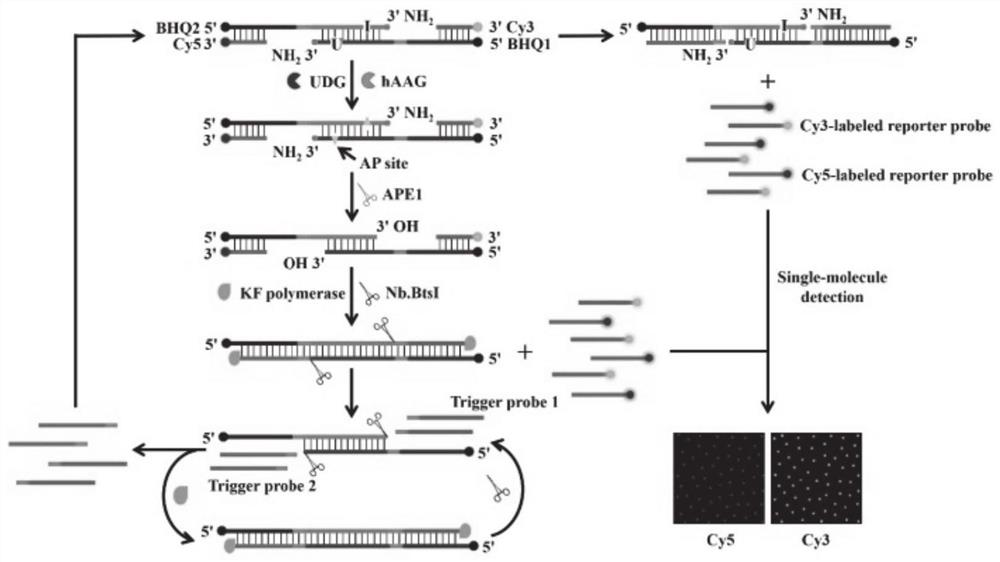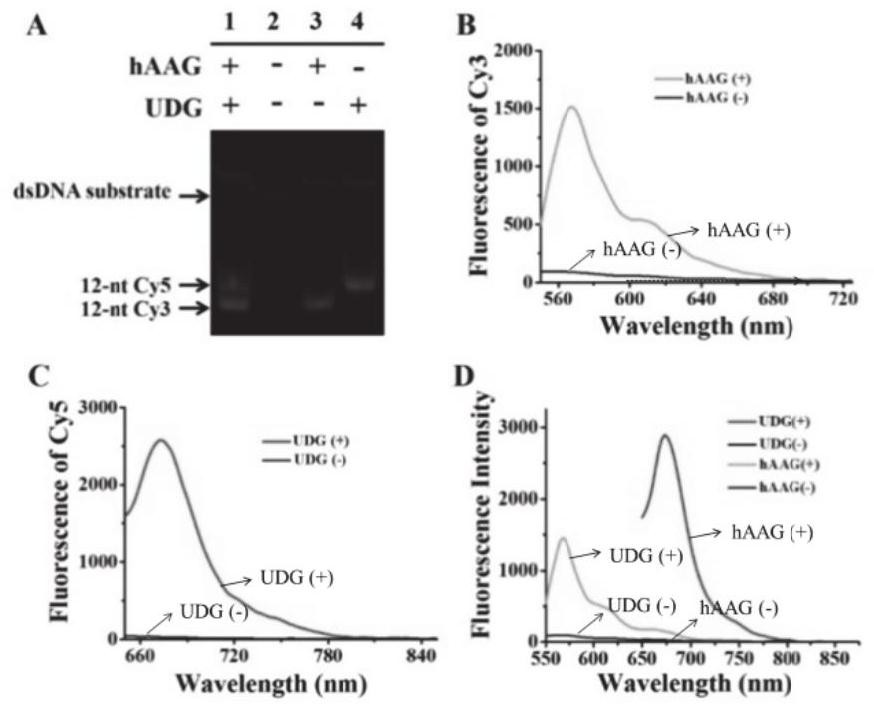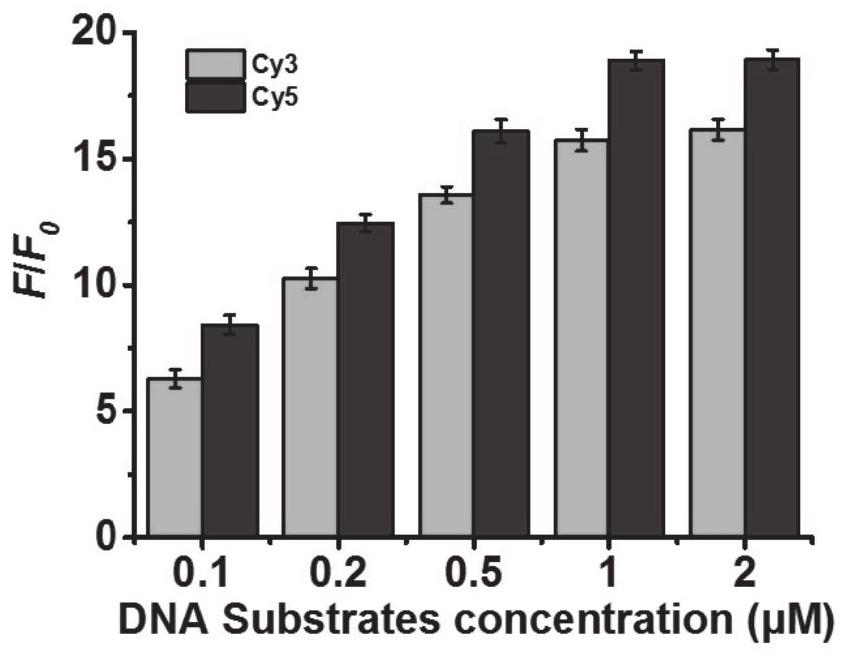Fluorescence chemical sensor for simultaneously detecting multiple DNA glycosylase and detection method and application thereof
A technology of chemical sensor and glycosylase, which is applied in the field of fluorescent chemical sensor and its detection, can solve the problems of low sensitivity and limited application, and achieve high sensitivity, prevent non-specific amplification, and good specificity
- Summary
- Abstract
- Description
- Claims
- Application Information
AI Technical Summary
Problems solved by technology
Method used
Image
Examples
preparation example Construction
[0074] The second aspect of the present invention provides a method for preparing a fluorescent chemical sensor for simultaneous detection of multiple DNA glycosylases, comprising: combining multiple DNA glycosylase recognition sequences with a fluorescent group-modified reporter probe in a buffer The reaction is carried out by heating in the liquid, and after cooling, a fluorescent chemical sensor for simultaneously detecting multiple DNA glycosylases is formed.
[0075] Preferably, the concentration of each DNA glycosylase recognition sequence and the reporter probe modified by the fluorescent group is 10 μM / L;
[0076] Preferably, the heating temperature is 80-100°C, and the temperature is kept for 5-10 minutes, preferably 95°C for 5 minutes.
[0077] The third aspect of the present invention provides an application of a fluorescent chemical sensor for simultaneous detection of multiple DNA glycosylases in DNA glycosylases.
[0078] Preferably, there are at least two DNA g...
Embodiment 1
[0095] 1. Preparation of bifunctional double-stranded DNA probes.
[0096] 10 μmol hAAG probe, 10 μmol UDG probe, 10 μmol Cy3-labeled reporter probe and 10 μmol Cy5-labeled reporter probe were dissolved in 10×NEB buffer 4 (500 mmol potassium acetate, 200 mM Tris(hydroxymethyl)aminomethane-acetic acid, 100 mmol magnesium acetate, 10 mmol dithiothreitol, pH 7.9) were incubated at 95°C for 5 min, then slowly cooled to room temperature to form bifunctional double-stranded DNA probe. The obtained bifunctional double-stranded DNA probes were stored at 4°C for future use.
[0097] 2. DNA glycosylase-induced base excision reaction and strand displacement amplification reaction.
[0098] The base excision reaction induced by DNA glycosylase was carried out in a 10 microliter reaction system containing 1 micromole of bifunctional double-stranded DNA probe, 1×NEB buffer 4, 1×UDG reaction buffer, 2U APE1 and different concentrations of hAAG and UDG were incubated at 37°C for 1 hour. T...
Embodiment 2
[0114] 1. Feasibility verification of the experimental method
[0115] Using non-denaturing polyacrylamide gel electrophoresis (PAGE, figure 2 A) and fluorescence measurements ( figure 2 B-D), to verify the feasibility of the proposed method. In the presence of hAAG, a distinct 12-base band was observed for the Cy3-labeled reporter probe ( figure 2 A, Lane 3, the region indicated by the arrow at the bottom), showing the release of Cy3 reporter probe induced by hAAG-mediated base removal and strand displacement amplification reaction. Likewise, a unique 12-base band formed by the Cy5-labeled reporter probe was observed in the presence of UDG ( figure 2 A, lane 4, the region indicated by the middle arrow), showing the release of Cy5 reporter probe induced by UDG-mediated base removal and strand displacement amplification reaction. When both hAAG and UDG are present, bands of Cy3-labeled reporter probe and Cy5-labeled reporter probe can be observed ( figure 2 A, Lane 1)...
PUM
 Login to View More
Login to View More Abstract
Description
Claims
Application Information
 Login to View More
Login to View More - R&D Engineer
- R&D Manager
- IP Professional
- Industry Leading Data Capabilities
- Powerful AI technology
- Patent DNA Extraction
Browse by: Latest US Patents, China's latest patents, Technical Efficacy Thesaurus, Application Domain, Technology Topic, Popular Technical Reports.
© 2024 PatSnap. All rights reserved.Legal|Privacy policy|Modern Slavery Act Transparency Statement|Sitemap|About US| Contact US: help@patsnap.com










